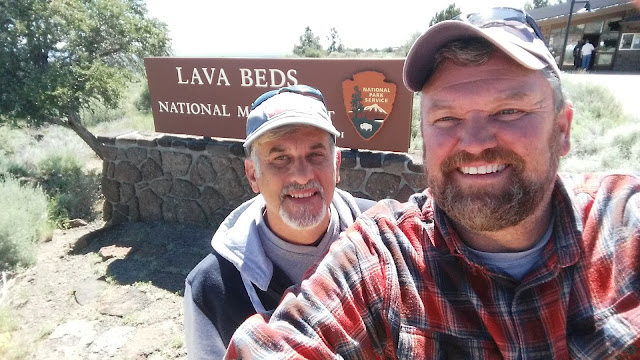Visited on 6/17/18
returning from a weekend adventurous camping trip where we met up with Jeff’s
brother, Brian and his two nieces Hannah and Lauren up at Lava Beds National
Monument near Tule Lake, CA. On our way
home we drove down into the Tule Valley / Basin and navigated along the west
side and across the north to the town of Tule Lake, CA. The Lake is 13,000 acres large and is at
4,035 feet above sea level. Tule Lake is
an intermittent lake fed by the Lost River covering an area of 13,000 acres, 5
miles long and 3 miles across, in northeastern Siskiyou County and northwestern
Modoc County in California, along the border with Oregon.
Canby's Cross is
located about three miles south of the lake; it is the site where General
Edward Canby was killed by the Modoc chief Kintpuash, also known to American
settlers as Captain Jack.
During World War II,
the United States federal government forced the evacuation of Japanese
nationals and Japanese Americans, including citizens born in the United States,
to numerous camps built in the interior of California and inland states. They
were forced to sell their businesses and homes, and suffered enormous economic
and psychological losses by being treated as potential enemies. The Tule Lake
War Relocation Center, a Japanese American internment camp, is located to the
east in neighboring Modoc County. Following World War II, the federal
government awarded 86 farm sites on land reclaimed by the drainage of Tule Lake
to returning veterans using a Land Lottery.
A lottery was used because the number of applicants was greater than the
number of homesteads available Tule Lake Refuge is located in the fertile and
intensely farmed Tule Lake Basin of northeastern California. It was established
in 1928 by President Calvin Coolidge as a,“preserve and breeding ground for
wild birds and animals.” This
39,116-acre refuge is mostly open water and crop land. Approximately 17,000 acres are leased by
potato, onion, horse radish, alfalfa, and cereal grains within the Public Lease
Lands program administered by the U.S Bureau of Reclamation. Permit holders
farm an additional 1,900 acres in cooperation with the U.S. Fish and Wildlife
Service (FWS).The endangered Lost River and shortnose suckers live in or use
this refuge.
The refuge is a
significant staging area for migrating waterfowl during spring and fall
migrations. It is used primarily by whitefronted, snow, Ross, and cackling
Canada geese, all of which nest in the Arctic tundra. Tule Lake hunting
opportunities consist of two large marsh units accessible by boats, a
spaced-blind hunt in dry fields, and open free-roam areas offering field hunts
over harvested grain and smaller marsh units. A 10-mile auto tour route allows
for wildlife observation throughout the year.
View from the West side of the lake.
Jeff with in his cave exploring gear!



















































